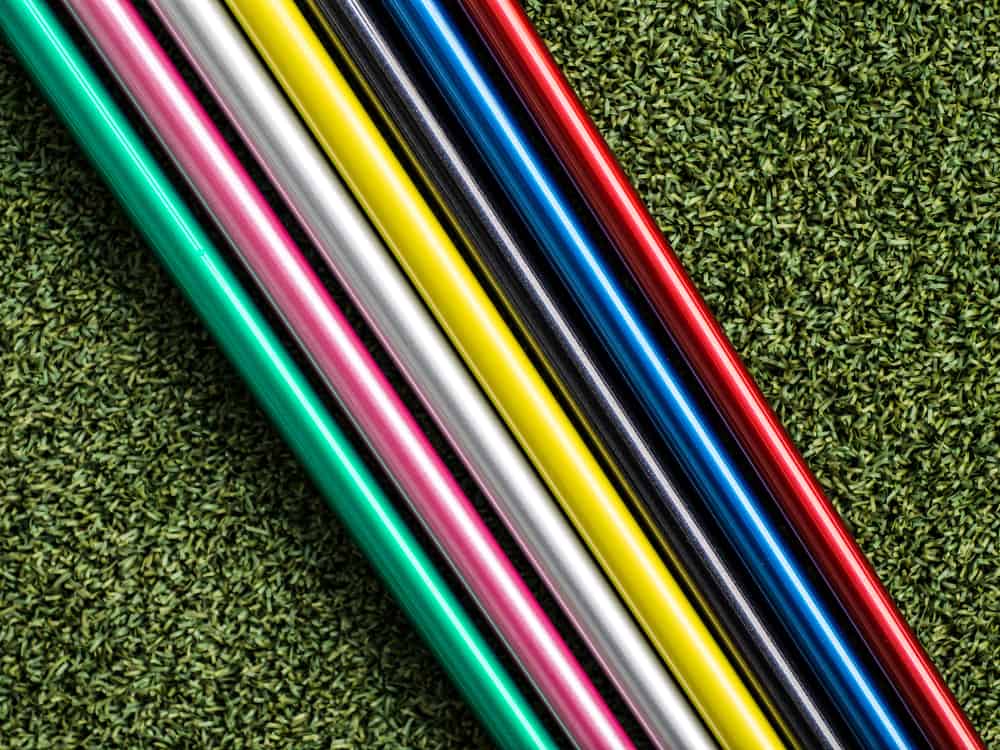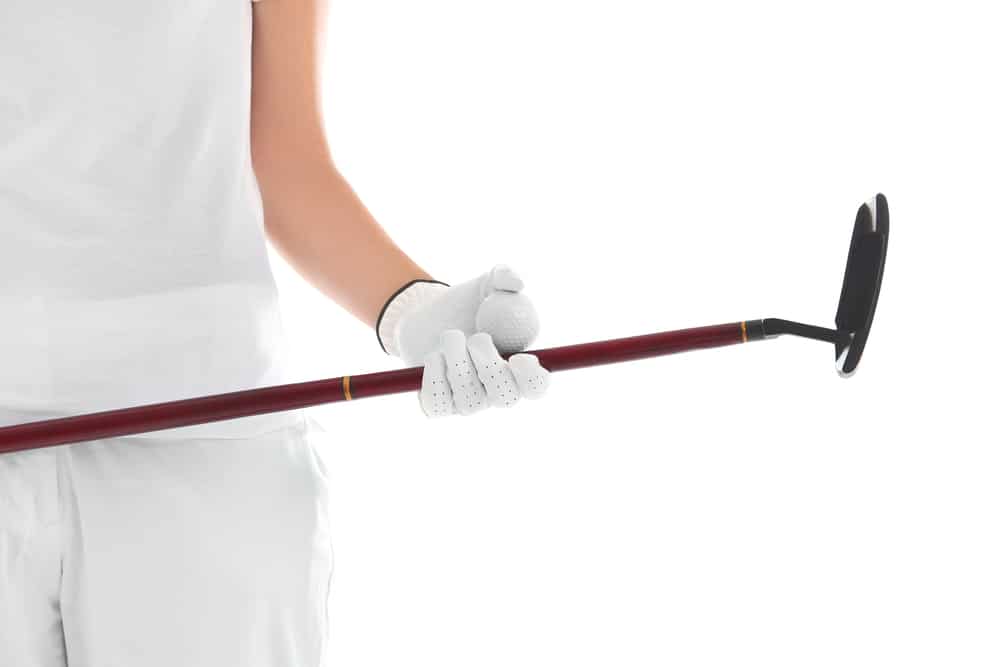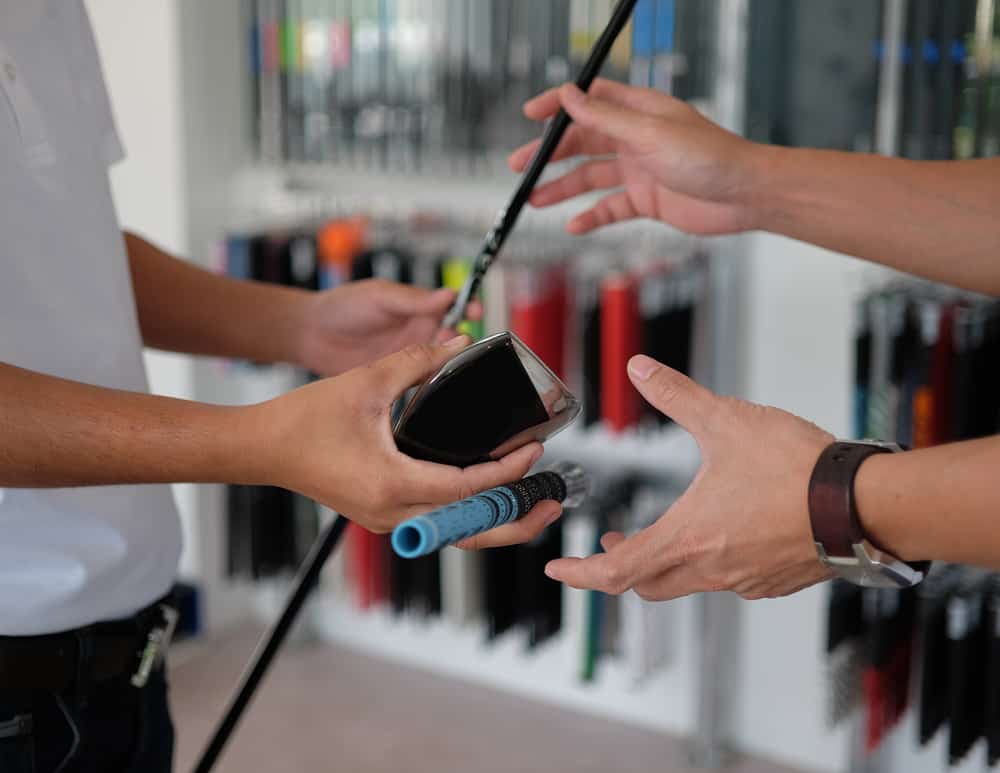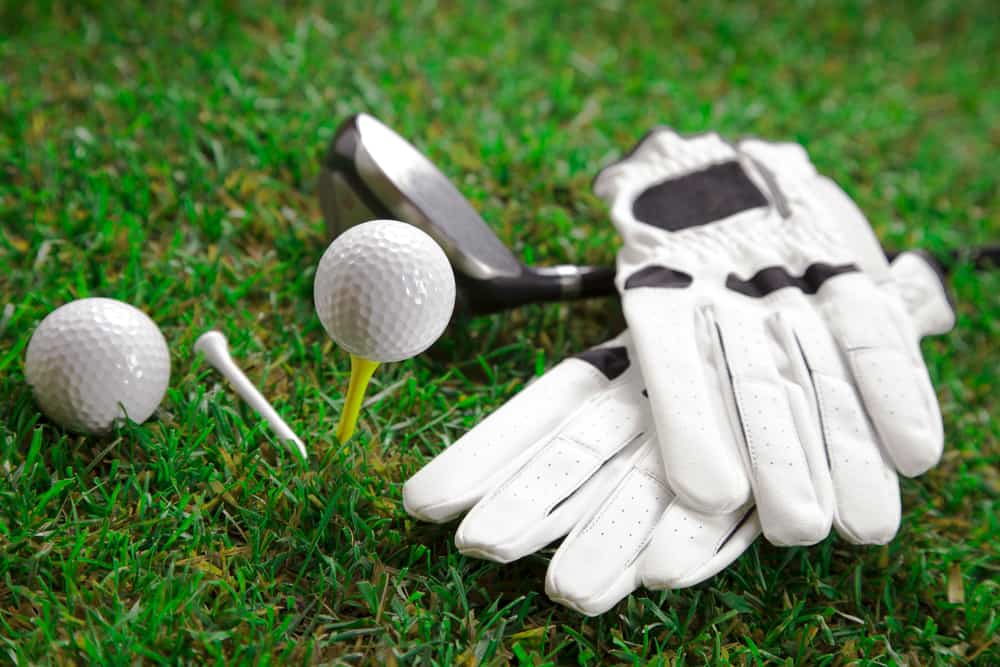
With golf custom fitting becoming so popular, players are recognizing the importance of the perfect golf shaft.
Golf shafts come in many different flexes, and it is important to understand them prior to purchasing your next set of clubs.
One shaft that players don’t really know enough about is the uniflex shaft.
If you are looking at a set of clubs and they come stock with uniflex, you will want to ensure you understand what that means.
We are here to answer all your questions about the uniflex golf shafts.
What Is Uniflex?

A uniflex is a shaft that is designed to adjust to the speed and flex of a player and bend at the appropriate point.
Uniflex shafts are usually a mix of a regular and a stiff shaft.
The concept is that, for a player who swings a bit faster, the shaft will flex appropriately and give them the resistance they need to get great distance.
For a slightly slower swinging player, the uniflex will give a bit more leeway and allow the player to get the speed and distance that they need.
Uniflex golf shafts are primarily used in beginner-type golf sets.
These sets are for people who are just getting into the game, and they are not sure which is going to be the right fit for them.
The uniflex gives players the chance to learn the game and figure out a bit more about what type of golfer they are prior to settling on a shaft.
Once golfers have been in the game for a while, they can then decide whether the regular or stiff shaft is better for them.
Uniflex is not a shaft that you typically see offered on premium golf club sets.
This is because the custom fitting and options for players tend to get a bit more specific.
For instance, if you find that your swing speed is 95 mph, you are going to want to zero in on the exact shaft that will benefit that speed.
Players who still are unsure of their typical swing speed will have to spend some time figuring that out before you purchase a custom set.
Who Should Play with a Uniflex Golf Shaft?

A uniflex golf shaft is best suited for a new golfer or a player who does not play frequently.
Since the uniflex golf shaft can adjust to the golfer who is playing the game, it is a good option for the players who don’t have as much control over their speed as of yet.
Chances are if you play a few times per year, your game is going to be a bit inconsistent.
The best way to combat this inconsistency is to start working on your game and spending more time practicing.
Once you have a more consistent golf game, you can narrow down the proper golf shaft choices for you.
For golfers who are new to the game, there is no need to be concerned with using the uniflex shaft.
This is not an option that can hurt your game unless you have a very slow swing speed.
Senior golfers and some women golfers may struggle with the uniflex since it tends to be a bit of a mix between a regular and stiff shaft.
In addition, there is no exact way to compare a uniflex from one company to a uniflex from another company.
This means that one unilfex shaft you use could be more difficult to hit than another.
It’s smart to try out some equipment before purchasing so that you can ensure the clubs you get are properly suited for your game.
With a uniflex shaft, you will likely be able to make it work, but the shafts may not be the right solution forever.
Think of this as a bit more of a transition from your first set of clubs to your final set of golf clubs.
How Do I Know What Golf Shaft to Choose?

Choosing the proper golf shaft for your club is going to be just as important as choosing the club head itself.
In fact, some professionals will tell you that the shaft is even more important than the clubhead.
There are thousands of shaft choices on the market.
Years ago, there would have been just a handful of options, and that made this process much easier.
Over time, things have changed, and golfers are getting more and more detailed about the type of equipment they use.
This is why there are so many more opportunities for custom fitting.
If you are thinking it’s time for a new set of golf clubs but you don’t know what to do about choosing the proper shaft, let’s take a look at all that you need to know.
1. Swing Speed

Swing speed is the easiest way to determine the best shaft in your set of golf clubs.
The faster you swing the club, the stiffer the shaft that you need to put in your golf clubs.
Golfers with slower swing speeds will need a very flexible shaft to help them get the ball to the intended target.
Overall, swing speed is the easiest and most-used way to choose a golf shaft, but the problem is that it can’t always be dependent upon the swing speed.
Sometimes there are other factors that need to be taken into consideration.
For instance, most players are going to swing their driver quite a bit faster than they swing their irons.
This leads to golfers needing different shafts in their driver than they need in their irons.
This is quite common and a major reason we can’t assume that one swing speed measurement is going to precisely determine the club that a golfer needs for their game.
2. Weight

The weight of the shaft is also important.
The faster you can swing the club, the heavier the shaft you can play with.
If you are a slower swinging golfer, you will need a golf shaft that is a bit lighter.
The problem with using a shaft that is too light is that you may have a hard time controlling the golf ball.
Overall weight is a major consideration when it comes to ball flight.
Heavier shafts tend to keep the ball lower.
This is a good thing to consider if you are needing a hybrid that you want to run up to the green.
Something with a low spin and a slightly heavier shaft is going to be the best solution.
When you are choosing the best shafts for your golf club, try and choose a few different weights to see if you can find something that works for you.
Overall, the weight of the clubhead will also come into play.
3. Material

Golf shafts come in two basic materials: graphite and steel.
There are different benefits to each of these materials, and they should be considered when shopping for new clubs.
Steel golf shafts are typically seen in wedges, irons, and putters.
The steel golf shaft is traditionally a bit heavier than the graphite shaft.
However, there are some newer lighter weight steel options that can make it much easier for players who struggle with distance.
Overall, steel shafts are going to be best when it comes to control.
If you like to hit a fade or a draw and really go after a pin, the steel shaft is for you.
Even if this type of performance ends up costing you a few yards, the overall accuracy will be worth the distance.
The graphite golf clubs are known for long distances.
You can hit these clubs quite far, but you bring into play a wider area for misses.
Where you may be able to miss a steel shaft by four or five yards, you can expect eight or nine yards with graphite.
Of course, these numbers will be entirely dependent on the type of club you are using and the shaft material in them.
The graphite shafts are most commonly seen in hybrids, fairway woods, and drivers.
With a graphite shaft, the lighter weight helps players swing the club harder and faster, and it ultimately results in more distance.
Graphite shafts and steel shafts both have positive features.
Most golfers are going to have a combination of graphite and steel in their bags.
This is typically the best way to ensure that all necessary clubs are in place and that golfers get the feel and performance that they need.
4. Custom Fitting

Truly, custom fitting is the best way to find out which golf shaft will be the best for you.
The only downside or negative to custom fitting for your next set of golf clubs is the price.
It costs quite a bit of money to go for a fitting at times.
This money is typically applied toward the price of the new clubs that you purchase, but you will want to make sure that you have the budget and funds in place before starting to shop for your new clubs.
Custom fitting typically involves measuring and testing to make sure that you are getting the right clubs.
In addition to making sure the shaft is the right option, you can also check on the lie angle and loft of each club.
Based on your swing and the unique characteristics of your body, the club preferences are going to vary.
Custom fitting for golf clubs is becoming almost a necessary step in the purchase of new equipment.
The great news is that if you go for a fitting and you know your stats, you can use them for years to come.
Chances are your swing speed and lie angle are not going to change that much from year to year.
As you age, you may want to head in for another fitting just to be sure.
However, if you are certain that you are a regular shaft golfer, then you can feel confident upgrading your clubs to another regular shaft.
Most of the time, the amount of stiffness between shafts is going to be relatively close.
A regular True Temper will be close to a regular Nippon golf shaft.
Conclusion
A uniflex golf shaft is not one that golfers will typically go out shopping for.
However, you may find that in some beginner sets or full complete sets of golf clubs, the uniflex shaft is readily available.
To ensure that you can hit a uniflex shaft, make sure you can at least swing with a regular-shafted golf club.
The uniflex will be slightly stiffer than this, but most players will have no issues handling the uniflex if they can use the regular shafted clubs.
When you find that your game gets a bit inconsistent with the uniflex, it may be time to switch to something stiffer like a traditional stiff-shafted golf club.
Overall, finding the right shaft for your game takes a bit of time and research, but it will be well worth it.



Leave a Reply